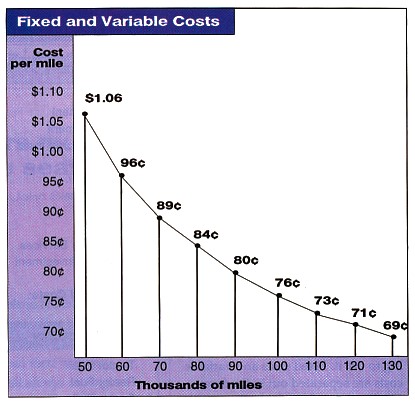5 7 Common-Size Statements Principles of Finance

A common size balance sheet is a comparative analysis of a company’s performance over a period, used to determine how the company is using its assets. Below is an example of a common size balance sheet for technology giant International Business Machines (IBM). Running through some of the examples touched on above, we can see that long-term debt averages around 34% of total assets over the two-year period, which reasonable. Cash ranges between 5% and 8.5% of total assets, and short-term debt accounted for about 5% of total assets over the past two years. Financial Analysis is helpful in accurately ascertaining and forecasting future trends and conditions. The primary aim of horizontal analysis is to compare line items in order to ascertain the changes in trend over time.
It often is insightful to compare a firm to the best performing firm in its industry (benchmarking). To compare to the industry, the ratios are calculated for each firm in the industry and an average for the industry is calculated. Comparative statements then may be constructed with the company of interest in one column and the industry averages in another.
More Resources on Small Business Accounting
Net income, however, only declined by 1 percent from 30 percent in the prior year to 29 percent in the current year because interest expense dropped by 1 percent, offsetting the 2 percent increase in salaries expense. However, a simple tool like Microsoft Excel can be quite handy in making the process easier and faster. The same formula can be copied and replicated in each income statement line, making the calculations much faster. In Figure 5.21, you can see the formulas used to create Clear Lake Sporting Goods’ common-size income statement in Excel. Notice that the $ can be inserted to anchor a cell reference, making it easier to copy and paste the same formula onto many lines or columns. It assists the management in drafting future plans and forecast trends which is achieved by analyzing the profitability and operating efficiency of a business over time.

Each line item on the balance sheet is restated as a percentage of total assets. Common size ratios are used to compare financial statements of different-size companies, or of the same company over different periods. By expressing the items in proportion to some size-related measure, standardized financial statements can be created, revealing trends and providing insight into how the different companies compare. A common size statement is prepared as a columnar form for performing analysis. In such a statement each item of the available financial statement is compared to a common item.
The Common Size Analysis of Financial Statements
As against, the aim of vertical analysis is to ascertain the proportion of item, in relation to a common item in percentage terms. In Horizontal Financial Analysis, the comparison is made between an item of financial statement, with that of the base year’s corresponding item. On the other hand, in vertical financial analysis, an item of the financial statement is compared with the common item of the same accounting period. On the debt and equity side of the balance sheet, however, there were a few percentage changes worth noting.

It can also help you understand fluctuations caused by seasons so that you can make better-informed business decisions. Investors also use comparative balance sheets to do a comparative analysis of financial ratios. When the comparative statements of two or more years of a firm are presented and compared, it is known as inter-period comparison or intra-firm comparison. However, when the comparative statements of two or more firms are compared over a number of years, then it is known as an inter-firm comparison. A common size analysis can also give insight into companies’ different strategies.
Resources for Your Growing Business
For example, in a common size income statement, each revenue and expense item is shown as a percentage of total sales. Similarly, in a common size balance sheet, each asset, liability, and equity item is shown as a percentage of total assets. This allows you to compare the relative proportions of different items across companies or periods, regardless of their absolute values. Financial statements are of wide use to a number of stakeholders, especially for shareholders as such statements provide a number of important information. Comparative and common size financial statements are two forms of statements used by companies to extract financial information. The difference between comparative and common size statement depends on the way financial information in statements are presented.
- A common-size analysis is especially useful when comparing companies of different sizes.
- It becomes a popular financial analysis method due to trends being expressed in percentages which makes evaluating the financial performance and operating efficiency of the firm relatively simpler.
- The common size method is appealing for research-intensive companies, for example, because they tend to focus on research and development (R&D) and what it represents as a percent of total sales.
- In this analysis, the line of items is compared in comparative financial statements or ratios over the reporting periods, so as to record the overall rise or fall in the company’s performance and profitability.
- Expressing the figures on the income statement and balance sheet as percentages rather than raw dollar figures allows for comparison to other companies regardless of size differences.
The financial statements are the final statements prepared by a business to compute the profitability for a particular period and the financial position on a particular date. The financial statements generally include the balance sheet, income statement, cash flow statement, change in equity statement, fund flow statement, comparative statement, etc. All these statements are available for the stakeholders of the business to analyse the business and it’s performance. Common Size Statements are those statements where the items are displayed as percentages of a common base figure instead of absolute figures. It is helpful for proper analysis between companies (inter-firm comparison) or between time periods of the same company (intra-firm comparison). In these statements, the relationship between items present in financial statements and common items like balance sheet total and net sales are highlighted in percentages.
Analyzing Organizational Performance
Notice that Clear Lake spends 50 percent of its sales on cost of goods sold while Charlie spends 59 percent. This is a significant difference that would be an indicator that Clear Lake and Charlie have key differences in their operations, purchasing policies, or general performance in their core products. A difference between comparative and common size statement date-to-date comparison within the company helps a business owner or investor identify financial performance trends over time. Investors can also compare companies who use the same accounting principles for reasons such as how organizations in the same business vertical respond to the changes in seasons.
Business owners use the comparative report to make strategic business decisions.
8×8, Inc. Reports First Quarter Fiscal 2024 Financial Results – Business Wire
8×8, Inc. Reports First Quarter Fiscal 2024 Financial Results.
Posted: Tue, 08 Aug 2023 20:05:00 GMT [source]
The percentage change simply allows you to see increases or decreases in figures expressed as a percentage. During an analysis of comparative balance sheets, these tools add alternative angles to consider. This guide will help you understand what a comparative balance sheet is, its advantages, and how to use it to do a comparative analysis. See the financial statement definition, and study the purpose of financial statements. Vertical Analysis refers to the analysis of the financial statement in which each item of the statement of a particular financial year is analysed, by comparing it with a common item.
Balance Sheet Analysis
Predicting of the trends of business which is forecasting of future trends in business. Star Ltd. has a greater share of Capital in the total sources of funds i.e. 66.67% in comparison to 60% of Sun Ltd. Early detection helps take corrective measures and align the business in meeting the desired target. In the above statement, it becomes convenient to compare results and express them in following forms.

They are often used to compare the financial performance of different companies or periods, as they eliminate the effects of size and scale. However, they also have some limitations and drawbacks that you should be aware of. In this article, we will explain what common size statements are, how to prepare them, and what are their advantages and disadvantages. In vertical analysis, the line of items on a balance sheet can be expressed as a proportion or percentage of total assets, liabilities or equity. However, in the case of the income statement, the same may be indicated as a percentage of gross sales, while in cash flow statement, the cash inflows and outflows are denoted as a proportion of total cash inflow. In this analysis, the line of items is compared in comparative financial statements or ratios over the reporting periods, so as to record the overall rise or fall in the company’s performance and profitability.
What is a Comparative Statement?
Analyst and business managers use the income statement, balance sheet and cash flow statement for comparative purposes. These are mainly prepared for internal decision-making purposes to be analyzed by the management. It generated an impressive level of operating cash flow that averaged 26.9%% of sales over the three-year period. Share repurchase activity as a percentage of total sales in each of the three years was minimal or non-existent, possibly due to economic and market conditions resulting from the Covid-19 pandemic.
- The ratios in common size statements tend to have less variation than the absolute values themselves, and trends in the ratios can reveal important changes in the business.
- Debt issuance is another important figure in proportion to the amount of annual sales it helps generate.
- During an analysis of comparative balance sheets, these tools add alternative angles to consider.
- Common size financial statements present all items in percentage terms where balance sheet items are presented as percentages of assets and income statement items are presented as percentages of sales.
- On the balance sheet, analysts commonly look to see the percentage of debt and equity to determine capital structure.
While the balance in the equipment account did change as a percentage of total assets, equipment remained the same at 20 percent. Other financial statements turned into a comparison form include the comparative income statement and comparative cash flow statement. The ratios in common size statements tend to have less variation than the absolute values themselves, and trends in the ratios can reveal important changes in the business. Historical comparisons can be made in a time-series analysis to identify such trends. The above common size statements are prepared in a vertical analysis, referencing each line on the financial statement to a total value on the statement in a given period. Common size statements have some disadvantages and limitations that should be taken into account.
